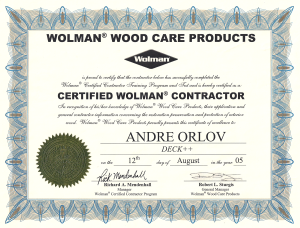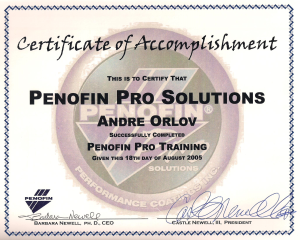Here is a good overview of the steps Exterior Wood Care takes to restore your deck, cedar siding, or other exterior wooden items.
CLEANING
We use a variety of wood cleaners depending on what is already on your deck. We may use bleach, household detergent, oxalic acid, turpentine, tri-sodium phosphate, oxygen bleach, etc. Each cleaner will interact differently with your wood surface. As experts in wood restoration, we know just the right product to use depending on the type of wood (i.e. cedar, pressure-treated, or exotic hardwood) and condition of your deck.
STRIPPING
Stripping removes the old stain and brings out the wood’s natural beauty. This process removes dirt, mildew, and stains using strong, but safe biodegradable cleaners. We use commercial grade wood detergents that give you the best possible results, even on wood that’s severely damaged by sun and rain. The stripping cleaners soak deep into the wood before we begin the washing process.
Most people think of deck refinishing as simply pressure washing. But there’s no way to get rid of old stain with just a pressure washer. To get the optimum results, you must first dissolve the old finish, dirt, and mold on the wood surface. This is where the magic happens. The product we apply will include active ingredients that are best matched to the condition of your deck.
WASHING
After we strip the wood, the surface is pressure-washed using very light pressure. The pressure is so light, that our technicians can put their bare hand in front of the spray. Of course, you should never do this at home yourself. A very light pressure prevents damage to the wood surface. We wash every nook and cranny multiple times to wash out as much stripper as possible.
BRIGHTENING
Once the wood has been washed, a special commercial grade brightener is applied to bring out the natural beauty and color of the wood. This extra step leaves the surface of the wood exceptionally clean, bright, and properly pH-balanced. The brightener also neutralizes the stripper or cleaner compound, which prevents the wood from darkening and becoming unhealthy.
SANDING
Weathering causes wood surfaces to crack, splinter, and warp. As a deck ages, many of the nails may have come loose or have been pushed above the wood surface. We first correct this problem before smoothing the wood – for light sanding jobs we use a nylon brush. After sanding, the wood remains rough enough to absorb the sealant. This is the typical type of sanding we normally use on most jobs.
However, if the existing stain is acrylic or another highly-durable product or if the wood surface is badly damaged, we’ll do a full, deep sanding which replaces the stripping and brightening process. Typically, removing acrylic with detergents and pressure washing requires a huge concentration of detergent that could be lethal to your plants and grass. Damage to the surface of the wood can result from extreme weathering, but could also be a result of another contractor using too much water pressure. In this case, sanding is safer and prevents further damage to the wood.
STAINING/SEALING
Our most popular product is a stain/sealer, which protects wood from UV, moisture, and organic elements, including mold, some fungus, and dirt penetration. After allowing the proper drying time, we use an electronic moisture meter to insure that all areas of the wood are completely dry. We perform a “maximum coating process,” to apply as much sealer as the wood will absorb. For exotic hardwoods, we apply sealer using a “double-coating technique.” We offer an assortment of deep penetrating, oil-based sealers in a variety of colors which preserve, protect, and enhance any type of wood. And if any residual mold and algae survived the previous restoration steps (perhaps in the gaps between deck boards) the moldicide contained in our top-quality stain will kill it.
MAINTENANCE
To guarantee a long life for your deck or other wood product, we only use the best, deep penetrating sealers. Even so, our most popular stain will require maintenance approximately every two years for horizontal surfaces and every four years for vertical surfaces. This can vary depending on the amount of exposure the wood will have to sun and snow. During maintenance sessions, we clean the wood to remove the outer layers of old sealer, then apply a fresh coat of stain. As long as you stick to the appropriate maintenance treatment – which is much more affordable than the initial restoration process – further stripping is unnecessary.
READ MORE: <PERFORMANCE LAB> <HIRING CONTRACTOR> <YOUR CONTRACTOR SHOULD KNOW> <DO IT YOURSELF>






